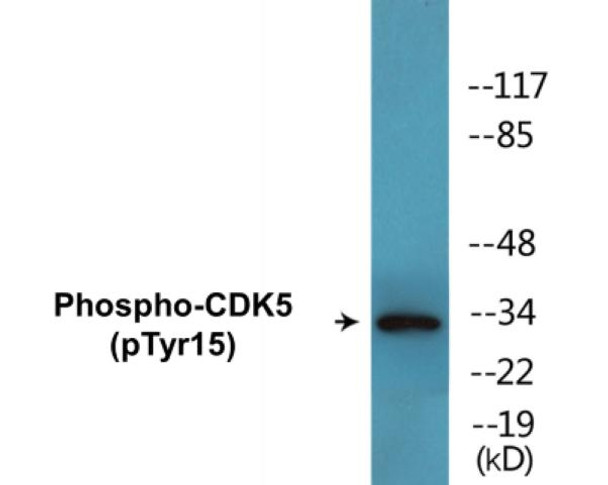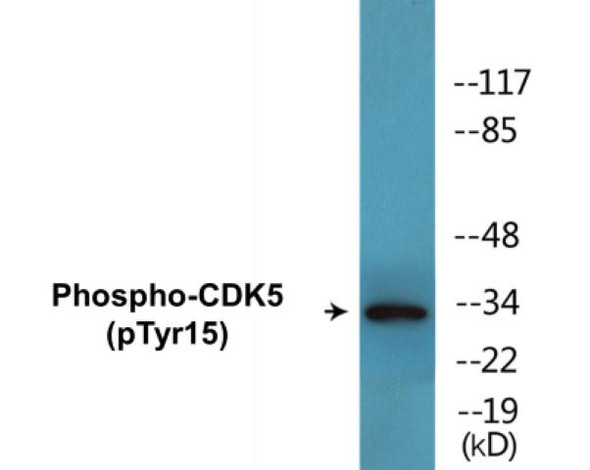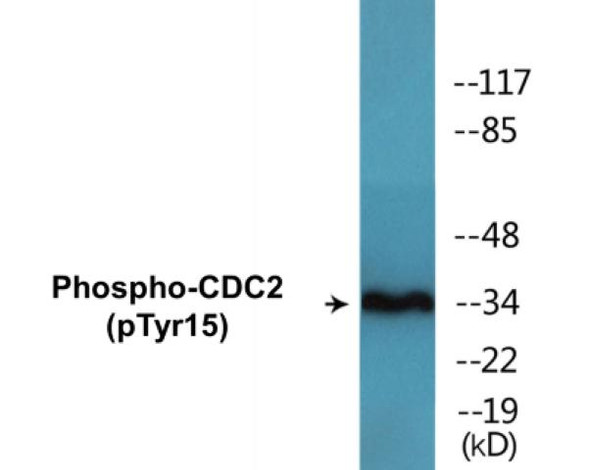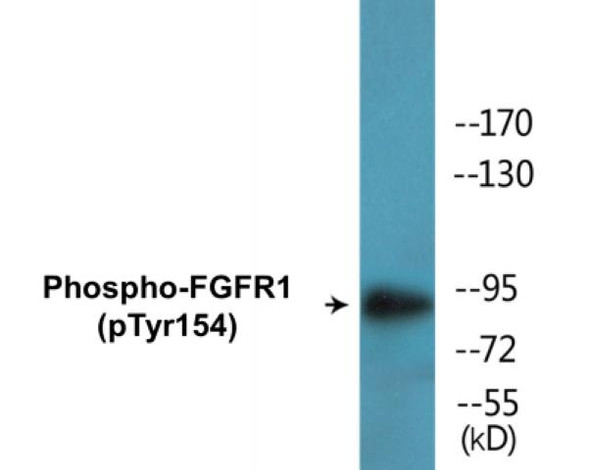Description
CDK5 (Phospho-Tyr15)Colorimetric Cell-Based ELISA Kit
The CDK5 Phospho-Tyr15 Colorimetric Cell-Based ELISA Kit is a cutting-edge tool for detecting and quantifying phosphorylated CDK5 at tyrosine 15 in cell lysates. This kit offers exceptional accuracy, sensitivity, and specificity, ensuring reliable and reproducible results for a variety of research applications.CDK5 is a protein kinase that plays a critical role in cell cycle regulation, neuronal development, and neurodegenerative diseases. Phosphorylation of CDK5 at tyrosine 15 is known to modulate its activity and function, making it an important marker for studying cellular signaling pathways and disease mechanisms.
With this innovative ELISA kit, researchers can gain valuable insights into the role of CDK5 phosphorylation in cellular processes and disease pathology. Its user-friendly format and robust performance make it an essential tool for advancing scientific understanding and developing potential therapeutic interventions.
| Product Name: | CDK5 (Phospho-Tyr15) Colorimetric Cell-Based ELISA |
| Product Code: | CBCAB00011 |
| ELISA Type: | Cell-Based |
| Target: | CDK5 (Phospho-Tyr15) |
| Reactivity: | Human, Mouse, Rat |
| Dynamic Range: | > 5000 Cells |
| Detection Method: | Colorimetric 450 nm |
| Format: | 2 x 96-Well Microplates |
The CDK5 (Phospho-Tyr15) Colorimetric Cell-Based ELISA Kit is a convenient, lysate-free, high throughput and sensitive assay kit that can detect CDK5 protein phosphorylation and expression profile in cells. The kit can be used for measuring the relative amounts of phosphorylated CDK5 in cultured cells as well as screening for the effects that various treatments, inhibitors (ie. siRNA or chemicals), or activators have on CDK5 phosphorylation.
Qualitative determination of CDK5 (Phospho-Tyr15) concentration is achieved by an indirect ELISA format. In essence, CDK5 (Phospho-Tyr15) is captured by CDK5 (Phospho-Tyr15)-specific primary antibodies while the HRP-conjugated secondary antibodies bind the Fc region of the primary antibody. Through this binding, the HRP enzyme conjugated to the secondary antibody can catalyze a colorimetric reaction upon substrate addition. Due to the qualitative nature of the Cell-Based ELISA, multiple normalization methods are needed:
| 1. | A monoclonal antibody specific for human GAPDH is included to serve as an internal positive control in normalizing the target absorbance values. |
| 2. | Following the colorimetric measurement of HRP activity via substrate addition, the Crystal Violet whole-cell staining method may be used to determine cell density. After staining, the results can be analysed by normalizing the absorbance values to cell amounts, by which the plating difference can be adjusted. |
| Database Information: | Gene ID: 1020, UniProt ID: Q00535, OMIM: 123831, Unigene: Hs.647078 |
| Gene Symbol: | CDK5 |
| Sub Type: | Phospho |
| UniProt Protein Function: | CDK5: a protein kinase of the CDK family. Unlike other members of this family, it is not activated by cyclins but by p35 (CDK5R1) and p39. An important regulator of neuronal positioning during brain development. May also play a role in synaptogenesis and neurotransmission. Substrates include TAU, MAP2, NF-H and -M, Nudel, PDE6, beta-catenin, amphyphysin, dynamin I, synapsin 1, Munc-18, and NMDA receptor 2A. Plays a role in myogenesis, haematopoietic cell differentiation, spermatogenesis, insulin secretion, and lens differentiation. Implicated in the pathology of neurofibrillary tangles and formation of senile plaques, hallmarks of Alzheimer?s disease. Induces tau phosphorylation and aggregation and neurofibrillary tangle deposition and neurodegeneration in in vitro and in vivo animal models. Brain samples from Alzeimer?s pateints show elevated CDK5 activity. |
| UniProt Protein Details: | Protein type:Protein kinase, CMGC; Kinase, protein; Cell cycle regulation; Protein kinase, Ser/Thr (non-receptor); EC 2.7.11.1; CMGC group; CDK family; CDK5 subfamily; CDK/CDK5 subfamily Chromosomal Location of Human Ortholog: 7q36 Cellular Component: axon; cell junction; cell soma; cytoplasm; cytosol; dendrite; growth cone; membrane; neuromuscular junction; nucleoplasm; nucleus; plasma membrane; postsynaptic density Molecular Function:acetylcholine receptor activator activity; cyclin-dependent protein kinase activity; ErbB-2 class receptor binding; ErbB-3 class receptor binding; kinase activity; protein binding; protein kinase activity; protein serine/threonine kinase activity; tau-protein kinase activity Biological Process: axon extension; cell proliferation; negative regulation of proteolysis; negative regulation of transcription, DNA-dependent; neurite development; neuron apoptosis; neuron differentiation; neuron migration; oligodendrocyte differentiation; peptidyl-serine phosphorylation; phosphorylation; positive regulation of neuron apoptosis; regulation of apoptosis; regulation of macroautophagy; regulation of synaptic plasticity; synaptic transmission; synaptic vesicle endocytosis; synaptic vesicle exocytosis; synaptogenesis Disease: Lissencephaly 7 With Cerebellar Hypoplasia |
| NCBI Summary: | This gene encodes a proline-directed serine/threonine kinase that is a member of the cyclin-dependent kinase family of proteins. Unlike other members of the family, the protein encoded by this gene does not directly control cell cycle regulation. Instead the protein, which is predominantly expressed at high levels in mammalian postmitotic central nervous system neurons, functions in diverse processes such as synaptic plasticity and neuronal migration through phosphorylation of proteins required for cytoskeletal organization, endocytosis and exocytosis, and apoptosis. In humans, an allelic variant of the gene that results in undetectable levels of the protein has been associated with lethal autosomal recessive lissencephaly-7. Alternative splicing results in multiple transcript variants. [provided by RefSeq, May 2015] |
| UniProt Code: | Q00535 |
| NCBI GenInfo Identifier: | 4033704 |
| NCBI Gene ID: | 1020 |
| NCBI Accession: | Q00535.3 |
| UniProt Secondary Accession: | Q00535,A1XKG3, |
| UniProt Related Accession: | Q00535 |
| Molecular Weight: | 29,544 Da |
| NCBI Full Name: | Cyclin-dependent-like kinase 5 |
| NCBI Synonym Full Names: | cyclin dependent kinase 5 |
| NCBI Official Symbol: | CDK5 |
| NCBI Official Synonym Symbols: | LIS7; PSSALRE |
| NCBI Protein Information: | cyclin-dependent-like kinase 5 |
| UniProt Protein Name: | Cyclin-dependent-like kinase 5 |
| UniProt Synonym Protein Names: | Cell division protein kinase 5; Serine/threonine-protein kinase PSSALRE; Tau protein kinase II catalytic subunit; TPKII catalytic subunit |
| Protein Family: | CDK5RAP1-like protein |
| UniProt Gene Name: | CDK5 |
| UniProt Entry Name: | CDK5_HUMAN |
| Component | Quantity |
| 96-Well Cell Culture Clear-Bottom Microplate | 2 plates |
| 10X TBS | 24 mL |
| Quenching Buffer | 24 mL |
| Blocking Buffer | 50 mL |
| 15X Wash Buffer | 50 mL |
| Primary Antibody Diluent | 12 mL |
| 100x Anti-Phospho Target Antibody | 60 µL |
| 100x Anti-Target Antibody | 60 µL |
| Anti-GAPDH Antibody | 60 µL |
| HRP-Conjugated Anti-Rabbit IgG Antibody | 12 mL |
| HRP-Conjugated Anti-Mouse IgG Antibody | 12 mL |
| SDS Solution | 12 mL |
| Stop Solution | 24 mL |
| Ready-to-Use Substrate | 12 mL |
| Crystal Violet Solution | 12 mL |
| Adhesive Plate Seals | 2 seals |
The following materials and/or equipment are NOT provided in this kit but are necessary to successfully conduct the experiment:
- Microplate reader able to measure absorbance at 450 nm and/or 595 nm for Crystal Violet Cell Staining (Optional)
- Micropipettes with capability of measuring volumes ranging from 1 µL to 1 ml
- 37% formaldehyde (Sigma Cat# F-8775) or formaldehyde from other sources
- Squirt bottle, manifold dispenser, multichannel pipette reservoir or automated microplate washer
- Graph paper or computer software capable of generating or displaying logarithmic functions
- Absorbent papers or vacuum aspirator
- Test tubes or microfuge tubes capable of storing ≥1 ml
- Poly-L-Lysine (Sigma Cat# P4832 for suspension cells)
- Orbital shaker (optional)
- Deionized or sterile water
*Note: Protocols are specific to each batch/lot. For the correct instructions please follow the protocol included in your kit.
| Step | Procedure |
| 1. | Seed 200 µL of 20,000 adherent cells in culture medium in each well of a 96-well plate. The plates included in the kit are sterile and treated for cell culture. For suspension cells and loosely attached cells, coat the plates with 100 µL of 10 µg/ml Poly-L-Lysine (not included) to each well of a 96-well plate for 30 minutes at 37°C prior to adding cells. |
| 2. | Incubate the cells for overnight at 37°C, 5% CO2. |
| 3. | Treat the cells as desired. |
| 4. | Remove the cell culture medium and rinse with 200 µL of 1x TBS, twice. |
| 5. | Fix the cells by incubating with 100 µL of Fixing Solution for 20 minutes at room temperature. The 4% formaldehyde is used for adherent cells and 8% formaldehyde is used for suspension cells and loosely attached cells. |
| 6. | Remove the Fixing Solution and wash the plate 3 times with 200 µL 1x Wash Buffer for five minutes each time with gentle shaking on the orbital shaker. The plate can be stored at 4°C for a week. |
| 7. | Add 100 µL of Quenching Buffer and incubate for 20 minutes at room temperature. |
| 8. | Wash the plate 3 times with 1x Wash Buffer for 5 minutes each time. |
| 9. | Add 200 µL of Blocking Buffer and incubate for 1 hour at room temperature. |
| 10. | Wash 3 times with 200 µL of 1x Wash Buffer for 5 minutes each time. |
| 11. | Add 50 µL of 1x primary antibodies Anti-CDK5 (Phospho-Tyr15) Antibody, Anti-CDK5 Antibody and/or Anti-GAPDH Antibody) to the corresponding wells, cover with Parafilm and incubate for 16 hours (overnight) at 4°C. If the target expression is known to be high, incubate for 2 hours at room temperature. |
| 12. | Wash 3 times with 200 µL of 1x Wash Buffer for 5 minutes each time. |
| 13. | Add 50 µL of 1x secondary antibodies (HRP-Conjugated AntiRabbit IgG Antibody or HRP-Conjugated Anti-Mouse IgG Antibody) to corresponding wells and incubate for 1.5 hours at room temperature. |
| 14. | Wash 3 times with 200 µL of 1x Wash Buffer for 5 minutes each time. |
| 15. | Add 50 µL of Ready-to-Use Substrate to each well and incubate for 30 minutes at room temperature in the dark. |
| 16. | Add 50 µL of Stop Solution to each well and read OD at 450 nm immediately using the microplate reader. |
(Additional Crystal Violet staining may be performed if desired – details of this may be found in the kit technical manual.)






